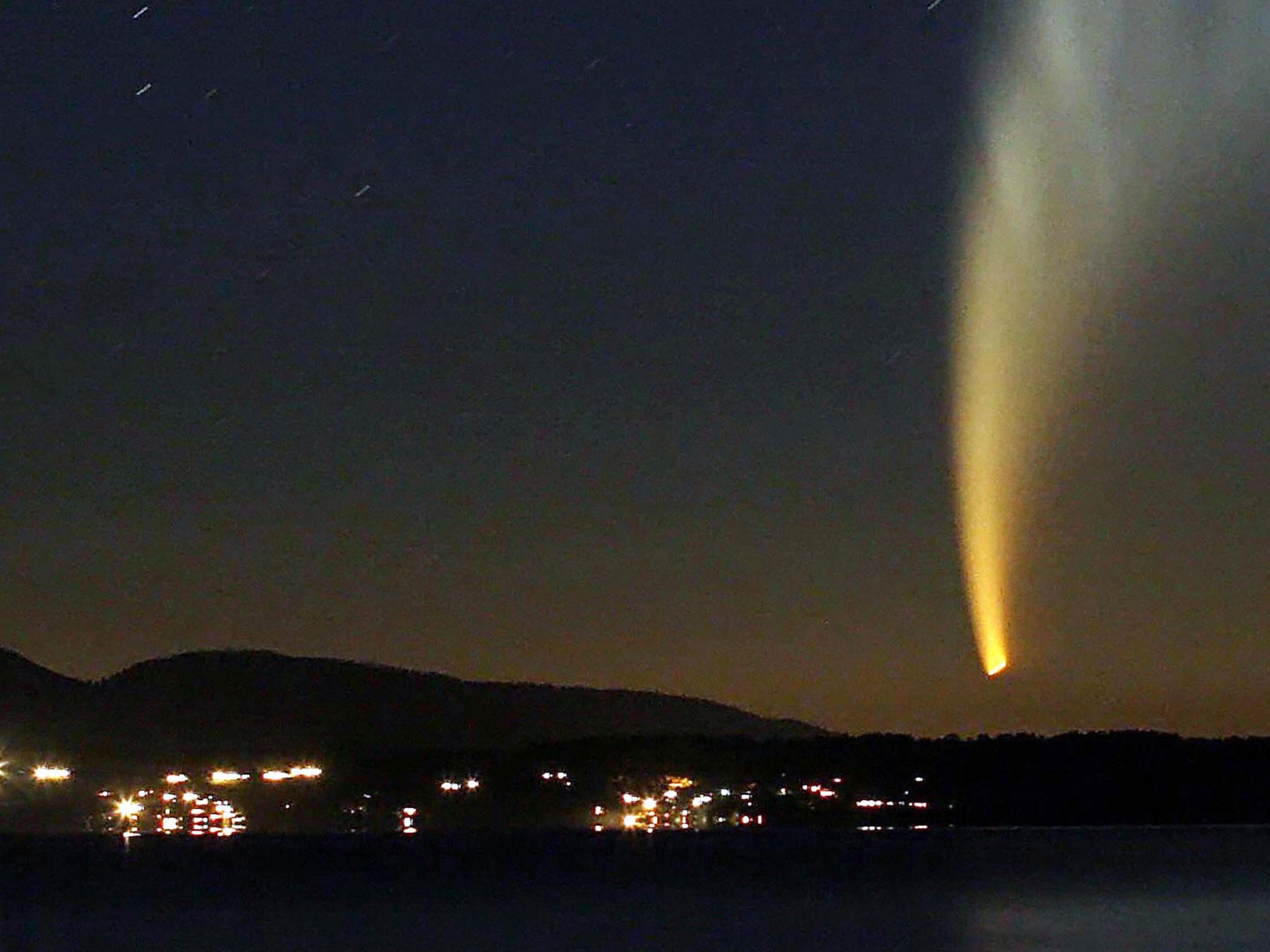Comet strike once caused runaway global warming that melted all the ice on Earth, scientists suggest
The reasons behind the rapid warming of the planet 55 million years ago – though not as rapid as the current rate – remain controversial

Your support helps us to tell the story
From reproductive rights to climate change to Big Tech, The Independent is on the ground when the story is developing. Whether it's investigating the financials of Elon Musk's pro-Trump PAC or producing our latest documentary, 'The A Word', which shines a light on the American women fighting for reproductive rights, we know how important it is to parse out the facts from the messaging.
At such a critical moment in US history, we need reporters on the ground. Your donation allows us to keep sending journalists to speak to both sides of the story.
The Independent is trusted by Americans across the entire political spectrum. And unlike many other quality news outlets, we choose not to lock Americans out of our reporting and analysis with paywalls. We believe quality journalism should be available to everyone, paid for by those who can afford it.
Your support makes all the difference.New evidence has been found that suggests a comet strike may have caused runaway global warming that melted all the ice on the planet 55 million years ago.
Temperatures at the time rose by between five and nine degrees Celsius as a vast amount of carbon was released into the atmosphere over thousands of years – estimates range from 5,000 to 20,000 years.
While this rise is dramatic on a geological timescale, it happened at a much slower rate than the one currently taking place.
Earth’s average temperature is now one degree Celsius above where it was a little over 100 years ago and climate scientists predict this increase could potentially hit 6.4 degrees by the end of this century – depending on our actions.
The comet-strike theory is controversial with most scientists believing the carbon came from a surge in volcanic eruptions.
When it was first suggested by Dr Dennis Kent, of Columbia and Rutgers universities in the US, in 2003, other experts were sceptical.
But the new study, published in the journal Science, puts forward what Dr Kent and colleagues believes is further evidence to support the idea.
The researchers found tiny spherical droplets of glass called microtektites in clay taken from the bank of a stream near Medford, New Jersey.
The 10-metre thick section of Marlboro clay is thought to have been laid down quickly and all the glass droplets were found in layer about 20cm thick at the bottom of the clay.
They are thought to have been formed when an extra-terrestrial object hits the Earth, superheating and vaporising material that is sent flying through the air. The glass is formed as the material cools.
Extremely high levels of carbon isotopes have also been found in a band of the Marlboro clay covering about a dozen years that is close to the layer of glass droplets.
The impact is thought to have taken place at the same time as the period of warming began because of the mysterious release of carbon dioxide.
Professor Morgan Schaller, of Rutgers and lead author of the paper in Science, said: “It's got to be more than coincidental that there's an impact right at the same time.
“If the impact was related, it suggests the carbon release was fast.”
And Dr Kent added: “It got warm in a hurry. This suggests where it came from.”
However the theory has a major obstacle to overcome if it is to become widely accepted as the researchers have not yet found an impact creator.
“It could have been next door, or it could have been on the other side of the planet,” Professor Schaller said.
The warming period 55 million years ago forced life on Earth to shift towards the North and South Poles and altered evolution. One concern about climate change today is that animals and plants will not be able to evolve fast enough.
The extinction of the dinosaurs is thought to have been partly caused by a massive impact off Mexico’s Yucatan Peninsula about 11 million years before this period. And 20 million years after it, another one created Chesapeake Bay near Washington DC.
Some sceptics about the comet-strike theory were unconvinced by the new evidence.
Professor Gerald Dickens, a marine geologist at Rice University who studies the Paleocene-Eocene Thermal Maximum, as the period is known, said the Science paper did not “really explain anything”.
He said there were “multiple arguments for why the carbon input took thousands of years” and “finding a few spherules does not change this”.
Join our commenting forum
Join thought-provoking conversations, follow other Independent readers and see their replies
Comments